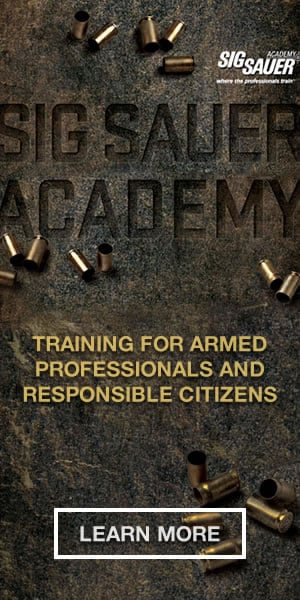Two rites of passage for youth have traditionally occurred on Christmas Day. The first one, receiving a BB gun, has been eternally enshrined in one of my favorite movies "A Christmas Story". I spent many an hour with a Crosman 760 Pump Action BB/Pellet rifle-a model that is still available today-roaming the woods behind our house, and well as a nearby abandoned railway in search of adventure.
But an even bigger rite of passage is receiving a .22 caliber rifle, which has traditionally been the first real firearm that kids receive under the tree.
Learning to shoot firearms as a kid should begin with learning on a .22 LR caliber rifle. The .22 LR (Long Rifle) cartridge has zero recoil, can be fired from a rifle without hearing protection, is extremely accurate, inexpensive to shoot, and is powerful enough to take small game and varmints. This makes it the perfect learning tool that can be enjoyed over a lifetime. I was fortunate to have a father that taught me to shoot at a young age using .22 rifles. If it wasn't for him, I would likely not be writing this column.
I firmly believe that junior shooters should receive a manually operated .22 as their first gun. Semi-automatics tend to promote poor marksmanship habits in young people who tend to be impatient anyway. A junior shooter should be learning discipline as part of marksmanship training and the safe handling of firearms. A manually operated repeater-whether it is a bolt action, pump action or lever action-helps slow the firing process down. The process of manually cycling the action builds patience.
I prefer a good lever action as a first or early rifle. I grew up in the cowboy television and movie era of the 1960's. The first .22 rifle I ever fired was a beautiful Marlin Model 39a from the 1950's that had belonged to my grandfather. While my dad also had a Winchester Model 62 pump, the Marlin was always my favorite. It functioned smoothly and was easy to operate, was very accurate, and was beautifully finished with a color case hardened receiver and beautiful walnut stock.
Lever guns fell out of disfavor when the semi-auto craze began a number of years ago. For many years there were only three main manufacturers of lever action .22's-Marlin, Winchester, Browning, Ithaca (single shot lever action) and for a few years, Ruger. Of that group, only Marlin still makes a lever action .22. But today there is an additional choice-the all-American made lever action rifles from Henry Repeating Arms.
In a world drowning in synthetically stocked rifles and matte finished metal, it is refreshing to view products from an American manufacturer that uses American walnut for its stocks on all its lever guns coupled with nicely finished metal parts. One of the other things I learned when dad took me shooting was to take care of and be careful with our guns. Oil the exposed metal parts after cleaning, store them properly, and use them carefully to preserve their appearance. Rust on a gun would be horrible. Pride of ownership can and should be taught as a part of owning that first Henry .22.
I have two Henry .22 lever actions. The first is the Classic Lever Action .22. The Classic is the lowest price Henry lever action, but the low price isn't reflective of quality. The Classic features the aforementioned walnut stocks, with a "splinter" style forend, blued finish, an 18 1/4 inch round barrel with plain black adjustable sights and a front sight hood. The receiver is grooved for a scope mount, but I would not mount an optical sight on first gun, because I believe new shooters should learn basic sighting principles with iron sights.
The action of a Henry .22 lever rifle MUST be experienced to be believed. There is no lever action rifle that is smoother. This makes cycling the action effortless for a young shooter, and unlike a bolt action, there is less disturbance of the gun position and sighting between shots. Accuracy of the Classic is superb. The Classic holds 15 rounds of .22 LR, 17 .22 Longs, or 21 .22 shorts. Herein lies another advantage of a manually operated tubular magazine .22. While all the semi-auto .22 shooters were unable to obtain hi-speed .22 LR ammo that would cycle their guns during the "great Obama ammo shortage", I was able to shoot my Henry with .22 LR standard velocity target ammo and .22 shorts.
The other Henry .22 I have is their top end rifle, the exquisite Golden Boy, the original rifle that propelled Henry to the top of the lever action market. Instead of a blued frame, Henry uses their exclusive Brasslite metal for the frame, which gives the Golden Boy the appearance of the original Henry .44 Rimfire Civil War rifle which Henry now makes in .44/40. The Golden Boy sports a curved Brasslite buttplate, a beautifully blued 20 inch octagonal barrel, a Brasslight barrel band, and a buckhorn adjustable rear sight with brass bead front sight. A scope can be mounted on the Golden Boy but again, that would detract from the looks in my book. This particular Golden Boy has my son's date of birth and initials as its serial number. One day it will find its way under the tree for him.
One final thought. Don't discount the purchase of a Henry Rifle for yourself. I shoot a lot of rifles designed for tactical or defensive use such as AR15's. When I got the Henry Classic I realized that I had forgotten how much fun shooting a .22 can be.


